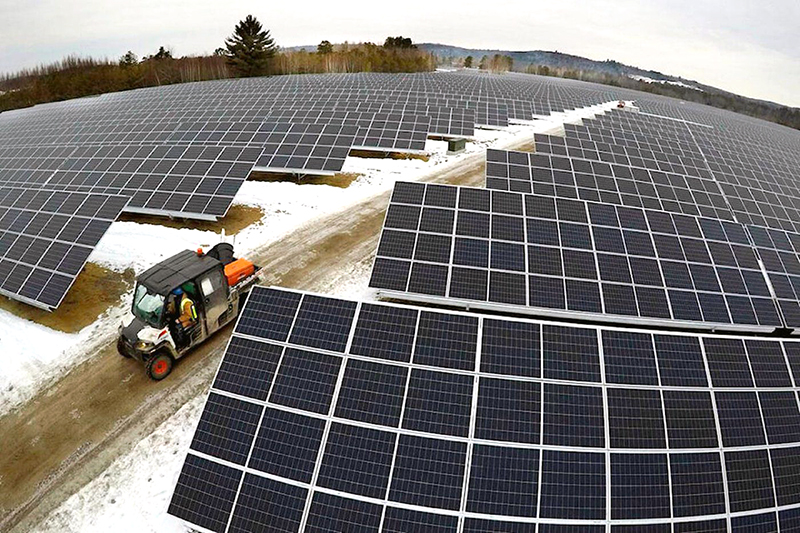Richardson Oilseed meeting the challenge of 21st century agri-food production
Heather Cameron,
Local Journalism Initiative Reporter
Hosted last month, there was a free industry event, Research in RINSA: Opportunities for Value Addition in Agrifood Industries, hosted by Lethbridge College in partnership with the Regional Innovation Network of Southern Alberta (RINSA).
At that event, Raja Ramachandran from Richardson Oilseed spoke about canola meal pellets that the company manufactures. Richardson International Limited, Ramachandran said, was established in 1857 and for more than 160 years, has been involved in Canadian agriculture on various levels.
Only in the last 20 to 25 years, Ramachandran said, has the company expanded into the food industry with oilseed being one of the flagship units with Richardson International. Richardson Oilseed, Ramachandran said, has locations all across North America, including locations in Lethbridge, Calgary, Saskatchewan, Oakville, Ontario, New Brunswick and Memphis, Tennessee.
The Lethbridge unit, Ramachandran said, was established in 1957, and it was the first canola hosting plant to be built in the entire world. It is a place that has been making products for the past 60 years. In 1999, Ramachandran said, the company acquired Campbell Foods and since then, there has been a lot of value seen in it.
“Our canola processing facility has expanded 10 times over in the last 20 years to 25 years,” said Ramachandran. “The reason behind that is the growing demand for value added products with oil, regulatory demands, and the need for healthy oil. Canola by far has a very low amount of trans fat and high amounts of omega-3, omega-6, which is what makes the oil very attractive.”
Ramachandran says the Lethbridge facility, which is spread around 25 acres and employs 150 people, brings in seed and makes several products, including canola oil, canola milk products, margarine, shortenings and various other blends.
“This location here in Lethbridge is very strategic because this is located on the southwestern corner of Western Canada, which is very accessible to the Vancouver Port terminals, which is one of the busiest port terminal in Canada and also the Pacific Northwest market, which is California, B.C., and a lot of those market areas where there’s a lot of populations. We are able to supply to a lot of those people, and the ag food industry in that area. We are serviced by the CP Railway, and that’s our major network where product comes in and out. So we bring in seed through trucks, but our product mostly goes through rail. On an average, we bring in 4,000 tons of canola seed every day, roughly 90 trucks. We have an in-house storage capacity of 13,000 metric tons of canola seed, but it doesn’t sit very long because we crush over 2000 metric tonnes a day.”
When seed comes into the plant, Ramachandran said, it comes in very cold, so the plant has to warm it up by conditioning it and that process of conditioning involves bringing the seed temperature up to 50 degrees before they stop flaking it. Flaking, Ramachandran said, is more like trying to smear the seed and increase the surface area of the seed so the oil can be expelled out. If the seed remains cold, Ramachandran said, it will shatter like plastic. The mechanical process, Ramachandran said, is used to extract the oil out of it, and the remains either become oil or meal.
“Canola roughly has, depending on where you source the seed from, anywhere between 20 per cent oil to 25 per cent oil. So for easy math, it’s called 40 per cent oil in it,” said Ramachandran. “The remaining 60 per cent of the canola seed is meal. That meal gets converted into value added canola meal pellet. Steam and pressure, temperature and moisture are the key parameters that we use to make those canola pellets.”
They keep the pellets anywhere between 12 to 24 hours, Ramachandran said, and then all the pellets get loaded into hopper cars, which take about 25 minutes to half an hour to load. A hopper car, Ramachandran said, is one hundred metric tonnes of canola pellets. The plant loads anywhere between 10 to 14 hoppers a day, and those hopper cars get released for CP Rail to pick up. The plant does serve some local businesses that bring their trucks to take some canola meal pellets every day, but the majority of them are transported via rail.
Ramachandran stated that all meal pellets go to a variety of markets, as different locations use them for different purposes.
“Our intention is to make them into pellets, so it makes them more digestible for those animals that are consuming them,” said Ramachandran. “When you make meal, it’s beaten, it is broken down, it’s homogenized. And the nutrient availability is equal. When you have good quality pellets, it’s like dust. When you have less dust, it’s less waste to the farm where it is getting further handled and also improves from an end user perspective. It’s a very good option to have them as a pellet rather than as a meal. It’s easier to handle.”
Recently, Ramachandran said, with all the expansion announcements, he thinks domestic consumption of canola seed is going to skyrocket up to 80 per cent, which means companies have to keep up with the export demand.
Richardson, Ramachandran said, continually invests in its Lethbridge location.
“We started with the seed storage and handling,” said Ramachandran. “From seed storage, we placed our processing capacity, and then on the oil side, we placed our refining capacity. We also have a state of the art lab that serves the needs of the canola processing operation, and also the packaging operation. And there are a couple projects that are still ongoing, which is the final stage in canola oil manufacturing, where the oil becomes oil. By the time it’s done, that’ll be the tallest structure in Lethbridge. We are looking at every opportunity as we continue to invest and expand in this business unit here. We are also looking at more sustainable options as well.”
Heather Cameron,
Local Journalism Initiative Reporter
The Taber Times





